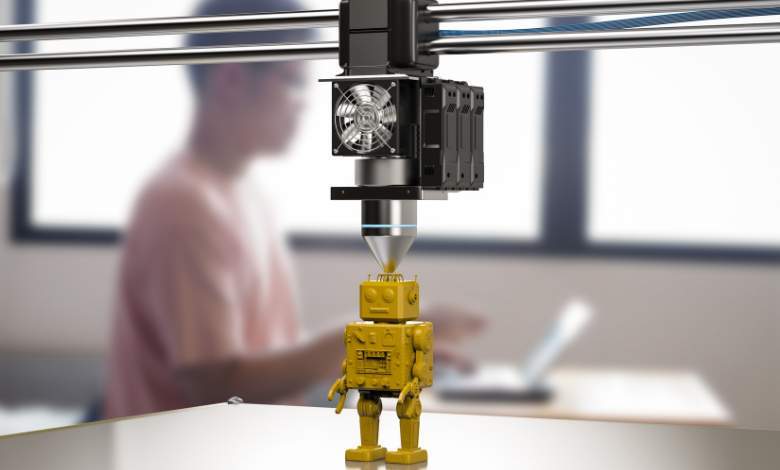
In recent years, the realm of manufacturing has witnessed a revolutionary transformation, courtesy of 3D printing and additive manufacturing technologies. These innovative processes have paved the way for a multitude of opportunities, from rapid prototyping to the creation of intricate components across various industries.
-
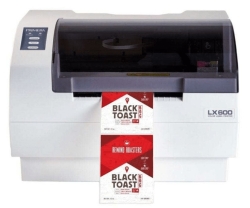 Primera LX600 Color Label Printer SKU: LX600$1,995.00
Primera LX600 Color Label Printer SKU: LX600$1,995.00
FREE SHIPPING over $199*
Orders before 12PM EST usually Ship Same Business Day - Product on sale
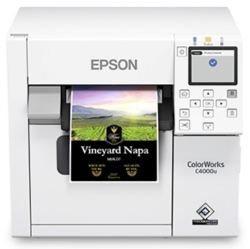 Epson C4000/CW-C4000 ColorWorks Inkjet Label Printer (Gloss) SKU: C31CK03A9991Original price was: $2,399.00.$2,199.00Current price is: $2,199.00.
Epson C4000/CW-C4000 ColorWorks Inkjet Label Printer (Gloss) SKU: C31CK03A9991Original price was: $2,399.00.$2,199.00Current price is: $2,199.00.
FREE SHIPPING over $199*
Orders before 12PM EST usually Ship Same Business Day -
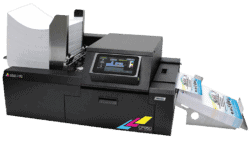 Afinia CP950 Envelope Packaging and Box Color Label Printer SKU: 35256$18,995.00
Afinia CP950 Envelope Packaging and Box Color Label Printer SKU: 35256$18,995.00
FREE SHIPPING over $199*
Orders before 12PM EST usually Ship Same Business Day
What Can You Make with a 3D Printer and Additive Manufacturing Technologies?
Useful things to 3D print: By using additive manufacturing, 3D printers combine digital data into three-dimensional objects. The flexibility of 3D printing enables the production of a wide spectrum of items, ranging from simple prototypes to elaborate, customized parts. Things to make with a 3D printer encompass figurines, jewelry, architectural models, prosthetic limbs, and even edible 3d printed items like intricately designed chocolate sculptures.
Applications Across Diverse Fields
Additive manufacturing’s ability to produce intricate shapes and structures with precision has led to its application across various sectors, transcending conventional product creation. Its influence extends to industries, bringing efficiency enhancements, cost reductions, and innovation acceleration to the forefront.
Revolutionizing Design with Rapid Prototyping
One of the most noteworthy benefits of 3D printing is its role in rapid prototyping. Engineers and designers can quickly produce a physical prototype for testing and validation. This iterative design process significantly diminishes development time, allowing for early identification of design flaws and ultimately leading to superior final products.
The Appeal of 3D Printers for Rapid Prototyping
Many projects cannot afford traditional prototyping methods due to their time commitment and financial constraints. 3D printing presents a faster and more cost-effective alternative. By enabling in-house prototype production, designers can make swift design adjustments and iterate as required, thereby expediting the product development cycle.
Sectors Embracing 3D Printing and Additive Manufacturing
Industries such as aerospace, automotive, and healthcare have wholeheartedly embraced additive manufacturing due to its capacity to fabricate lightweight, intricate, and tailored components. In the aerospace industry, 3D printing is instrumental in manufacturing lightweight parts that reduce fuel consumption and enhance aircraft performance.
3D Printing’s Influence in the Automotive Industry
CUPRA Racing, a division of SEAT specializing in high-performance vehicles, harnessed HP 3D printing technology to fashion lightweight components for their latest race car. By crafting parts with advanced materials, CUPRA Racing gained a competitive edge through weight reduction and improved overall performance.
Enhancing Car Part Production at Volkswagen with HP Metal Jet
Volkswagen, a prominent automobile manufacturer, adopted HP’s Metal Jet technology to streamline car part production. This innovative approach resulted in reduced production time, lowered costs, and heightened component quality, benefiting their vehicles substantially.
-
 TrojanLabel T2-C Tabletop Volume Press Label Printer SKU: 10000155$33,995.00
TrojanLabel T2-C Tabletop Volume Press Label Printer SKU: 10000155$33,995.00
FREE SHIPPING over $199*
Orders before 12PM EST usually Ship Same Business Day -
 Quick Label QL-120Xe Inkjet Color Label Printer with 1 Year Warranty SKU: 42725300$5,995.00
Quick Label QL-120Xe Inkjet Color Label Printer with 1 Year Warranty SKU: 42725300$5,995.00
FREE SHIPPING over $199*
Orders before 12PM EST usually Ship Same Business Day -
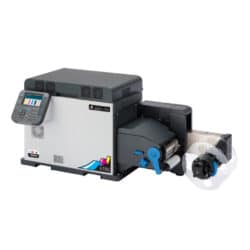 Afinia LT5C CMYK + White Label Printer SKU: 36138$12,495.00
Afinia LT5C CMYK + White Label Printer SKU: 36138$12,495.00
FREE SHIPPING over $199*
Orders before 12PM EST usually Ship Same Business Day
3D Printing’s Impact on the Aviation and Aerospace Sector
The aviation and aerospace sectors, characterized by the need for precision and lightweight components, have witnessed a significant transformation through additive manufacturing. This advancement in the production of aircraft parts has led to weight reduction, augmented fuel efficiency, and accelerated development cycles for cutting-edge technologies.
In the construction domain, 3D printing has facilitated the creation of intricate architectural models and even entire building structures. This technology empowers architects and interior designers to explore complex designs that were previously challenging to realize using conventional construction methods.
3D Printing Revolutionizing the Medical and Healthcare Arena
Additive manufacturing has brought about substantial changes in the medical and healthcare sectors. From patient-specific implants and prosthetics to intricate surgical tools, 3D printing has elevated patient care and increased the precision and efficiency of medical procedures.
Advantages of 3D Printing in Medical and Dental Applications
One of the most notable benefits of 3D printing in healthcare is its capacity to produce precise, patient-specific medical devices and dental implants. Traditional manufacturing methods often yield generic, one-size-fits-all solutions. Personalized implants and devices can be designed and manufactured with 3D printing to meet the needs of each patient.
Speed and Cost Efficiency
3D printing expedites the production of medical components, reducing lead times and costs. This advantage is exemplified through the following case studies:
- Everex, a medical device manufacturer, employed 3D printing to transform its production process. By leveraging additive manufacturing technology, they not only accelerated medical device manufacturing but also significantly reduced production costs.
- Biotec Italia s.r.l., a prominent electromedical equipment provider, integrated HP 3D printing into its operations. This adoption allowed them to manufacture intricate electromedical components at a rapid pace. Reduced production time translates to swifter delivery of crucial medical equipment to healthcare facilities, ultimately enhancing patient care.
-
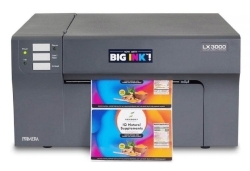 Primera LX3000 Color Label Printer with Big Ink, Pigment Ink SKU: LX3000-pigment$3,195.00
Primera LX3000 Color Label Printer with Big Ink, Pigment Ink SKU: LX3000-pigment$3,195.00
FREE SHIPPING over $199*
Orders before 12PM EST usually Ship Same Business Day - Product on sale
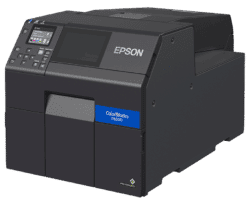 Epson ColorWorks CW-C6000A Matte Color Inkjet Label Printer with Auto Cutter SKU: C31CH76A9981Original price was: $2,899.00.$2,699.00Current price is: $2,699.00.
Epson ColorWorks CW-C6000A Matte Color Inkjet Label Printer with Auto Cutter SKU: C31CH76A9981Original price was: $2,899.00.$2,699.00Current price is: $2,699.00.
FREE SHIPPING over $199*
Orders before 12PM EST usually Ship Same Business Day -
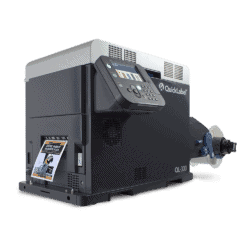 Quick Label QL-300 (120V) Toner CMYK Color Label Printer SKU: 1003-0000002$9,495.00
Quick Label QL-300 (120V) Toner CMYK Color Label Printer SKU: 1003-0000002$9,495.00
FREE SHIPPING over $199*
Orders before 12PM EST usually Ship Same Business Day
3D Printing’s Impact on Orthotics and Prosthetics
3D printing has left an indelible mark on the orthotics and prosthetics fields. Individuals with limb loss or musculoskeletal conditions now have access to tailored and comfortable solutions that elevate their quality of life.
Additive Manufacturing’s Role in Bioprinting
The convergence of 3D printing and biotechnology has given rise to bioprinting, a groundbreaking field with immense potential in tissue engineering, drug testing, and regenerative medicine. Digital printers utilize living cells and biomaterials to create functional biological tissues, organs, and even pharmaceutical compounds.
3D Printing Technology’s Role During the COVID-19 Pandemic
In the aftermath of the COVID-19 pandemic, healthcare systems around the world faced unprecedented challenges. In this crisis, 3D printing has emerged as a vital tool for mitigating shortages of medical supplies and equipment.
Rapid Prototyping and Production
In addition to face shields, ventilator components, and nasopharyngeal swabs, 3D printing enabled rapid prototyping and production. With conventional supply chains disrupted, additive manufacturing provided a lifeline by enabling local, on-demand production.
Collaboration and Innovation
The pandemic fostered collaboration between medical professionals, engineers, and 3D printing enthusiasts. This collaborative spirit led to the creation of open-source designs and initiatives, empowering individuals and organizations to contribute to the fight against COVID-19 by producing and distributing critical supplies.
Adaptability and Scalability
A major advantage of 3D printing during the pandemic was its ability to adapt and scale. As the situation evolved, designers could swiftly modify designs and scale production to meet the evolving needs of healthcare facilities and frontline workers.
Title: “The Dynamic World of 3D Printing: From Dental Aligners to Custom Golf Putters”
The remarkable evolution of the manufacturing landscape can be attributed to the remarkable versatility of 3D printing technology. From healthcare to consumer goods, education, and sports equipment, 3D printing is reshaping industries across the board. Throughout this comprehensive analysis, we explore the multifaceted applications of 3D printing in a broad range of industries. We place a special spotlight on the dental industry, featuring an innovative case study, and examine its far-reaching impact on consumer goods, education, and sports equipment.
-
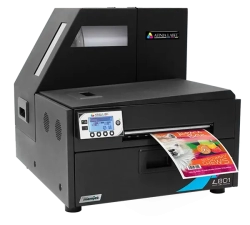 Afinia L801 Plus Commercial Color Label Printer SKU: 32498$8,495.00
Afinia L801 Plus Commercial Color Label Printer SKU: 32498$8,495.00
FREE SHIPPING over $199*
Orders before 12PM EST usually Ship Same Business Day -
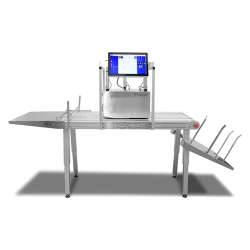 Trojan T3 OPX Over Printer Wide-Format Direct-to-Package Printing SKU: 43160000$26,330.00
Trojan T3 OPX Over Printer Wide-Format Direct-to-Package Printing SKU: 43160000$26,330.00
FREE SHIPPING over $199*
Orders before 12PM EST usually Ship Same Business Day -
 Epson ColorWorks C3500 Inkjet Color Label Printer SKU: C31CD54011 GTIN: 814420980046$2,199.00
Epson ColorWorks C3500 Inkjet Color Label Printer SKU: C31CD54011 GTIN: 814420980046$2,199.00
FREE SHIPPING over $199*
Orders before 12PM EST usually Ship Same Business Day
3D Printing Is Revolutionizing Dentistry
One of the most groundbreaking applications of 3D printing in healthcare can be witnessed in the field of dentistry. SmileDirectClub, a trailblazing teledentistry company, has harnessed the potential of 3D printing to revolutionize orthodontic treatment. They utilize additive manufacturing to swiftly and cost-effectively produce custom dental aligners, democratizing straighter smiles for millions worldwide. By employing 3D scanning technology to capture dental impressions, SmileDirectClub crafts aligners tailored to each patient’s unique dental structure. This innovation not only transforms the orthodontic industry but also showcases 3D printing’s potential in personalized healthcare solutions.
3D Printing’s Impact on Consumer Goods
Embracing 3D printing technology has led to a renaissance in the consumer goods industry. In the realm of footwear, this innovation has paved the way for the creation of personalized and performance-enhancing shoes. Sports enthusiasts and individuals seeking comfortable, tailor-made footwear can now have shoes designed and manufactured to meet their specific requirements.
3D Printing in Ophthalmology and Eyewear
3D printing has also left a profound mark on the eyewear sector. This technology enables the production of customized eyeglass frames and lenses, offering consumers not only a perfect fit but also the opportunity to express their style.
Case Study: Eyewear 3D Printing
Leading eyewear brands have embraced 3D printing to provide customers with a unique and personalized eyewear experience. This technology facilitates the creation of eyeglass frames that not only match an individual’s style but are also optimized for comfort and performance.
3D Printing’s Influence on Jewelry and Wearables
3D printing has revolutionized the jewelry and wearables industry by pushing the limits of design and production. As a result of this technology’s intricate and customizable pieces, it has revolutionized the fashion industry.
3D Printing’s Role in the Sports Equipment Domain
In the sports equipment industry, 3D printing has played a pivotal role in creating lightweight and high-performance gear. From custom-made golf putters to advanced tennis racket designs, additive manufacturing has elevated sports equipment to new heights.
-
 Primera LX910 Color Label Printer SKU: LX910$2,749.00
Primera LX910 Color Label Printer SKU: LX910$2,749.00
FREE SHIPPING over $199*
Orders before 12PM EST usually Ship Same Business Day -
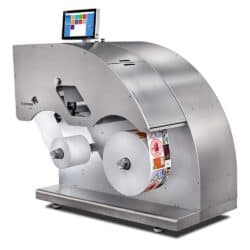 Trojan Label T2 High Volume Digital Label Press Color Label Printer SKU: 10000110-N Trojanlabel$67,195.00
Trojan Label T2 High Volume Digital Label Press Color Label Printer SKU: 10000110-N Trojanlabel$67,195.00
FREE SHIPPING over $199*
Orders before 12PM EST usually Ship Same Business Day -
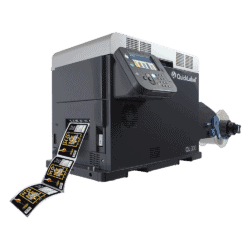 Quick Label QL-300s (120V) Toner CMYK + White Color Label Printer SKU: 1003-0000004$12,495.00
Quick Label QL-300s (120V) Toner CMYK + White Color Label Printer SKU: 1003-0000004$12,495.00
FREE SHIPPING over $199*
Orders before 12PM EST usually Ship Same Business Day
Case Study: Sports Equipment 3D Printing
Perfecting the Swing: Cobra Golf and Parmatech 3D Print Custom-Made Golf Putters
Cobra Golf and Parmatech have collaborated to create custom-made golf putters using 3D printing technology. This partnership not only enhances the performance of golfers but also underscores the potential of additive manufacturing in creating personalized sports equipment.
3D Printing’s Impact on Education
3D printing is reshaping education by providing students and educators with hands-on learning experiences. By incorporating 3D printing into curricula, schools and universities are preparing students for future careers in technology, design, and manufacturing.
3D printing has revolutionized the way many industries innovate and customize their products. From SmileDirectClub’s innovative approach to orthodontic treatment to personalized footwear, eyewear, jewelry, and sports equipment, the potential of 3D printing knows no bounds. Its role in education also fosters innovation and problem-solving in the next generation. As 3D printing technology continues to evolve, we can anticipate further groundbreaking developments that will redefine the way we design, manufacture, and interact with products in the future.
If you need guidance in selecting the right label printers, materials, or inks for your business’s printing needs or 3D printer uses, do not hesitate to reach out to us. TCS Digital Solutions is here to assist you. The labeling of products should be a priority, and together, we can build a safer, healthier world.


